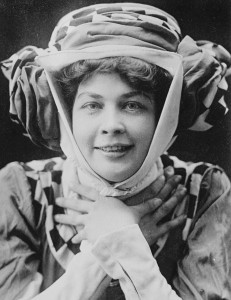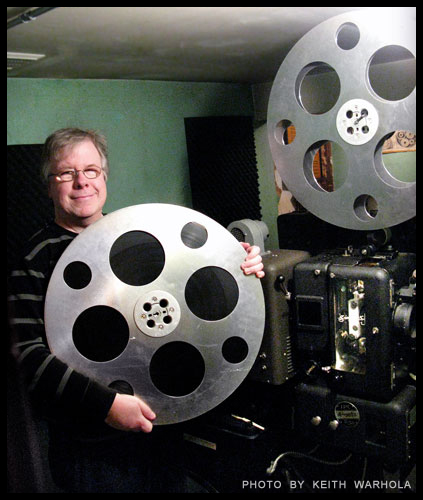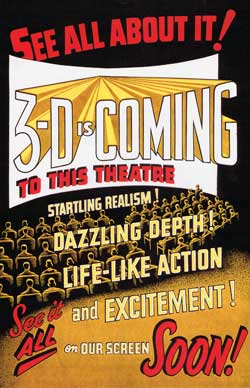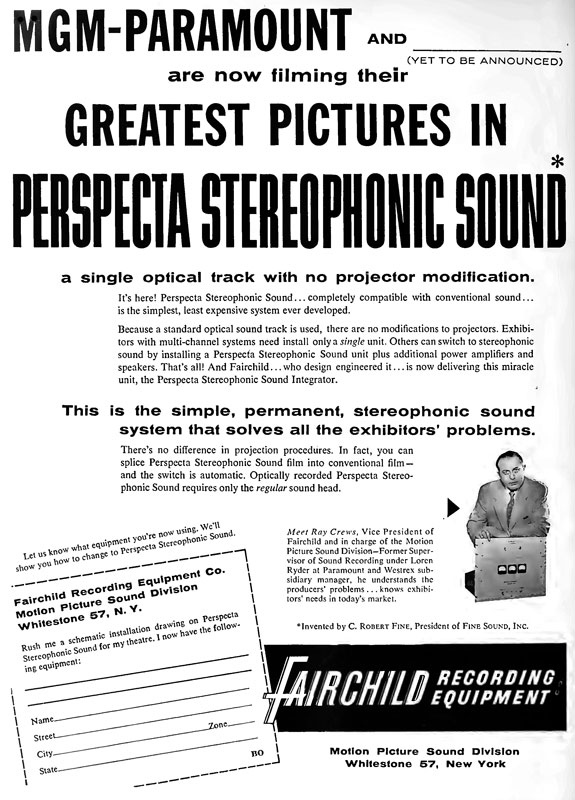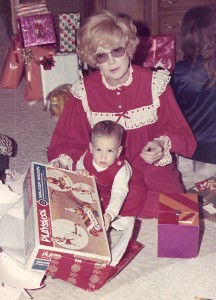
Film fans probably don’t know the name of Josh Mills, but it’s a name I’ve known for a long time. His mother, Edie Adams, was a hero of mine. Edie was a preservationist when it wasn’t fashionable to be one. She saved film that people said was worthless. She testified to Congress about it. You can’t be more of a hero in my book than that.
Josh has done a lot to forward the film preservation that his mom started. Full disclosure: I did some work on both the Kovacs DVD sets that will be mentioned here, because I had some rare and unique footage. I’m not being paid in any way for this, however. What I contributed is minuscule in comparison to what Josh and Ben Model did on these sets. We have them to thank for a legacy of Kovacs… and Edie Adams, as you’ll see…
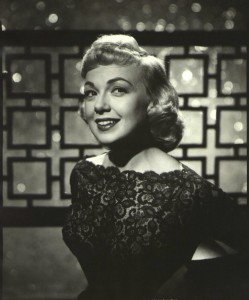
Q1:
Your mom was singer/actress/preservationist Edie Adams. She’s known and loved for a lot of things she did. I know most guys of a certain age remember her for her commercials for Dutch Masters, but I’d like to talk about some of her preservation work. She was singlehandedly responsible for saving most of Ernie Kovacs’ work. I’ve often called her the patron saint of film preservation, because she went out on a limb to buy up film and tape of Kovacs to keep it from being destroyed. Can you talk a little about that aspect of your mom? Was this always a part of your discussions as you grew up?
A: If I was 14 and not 44, I might shy away from my mom’s ‘Why-dontcha-pick-one-up-and-smoke-it-sometime’ allure. As a teenager, I was at a baseball game where she sang the national anthem and the guys behind me didn’t know she was my mom and there was a lot of, ‘When I was a kid and she came on TV….’ hubba hubba…..but at 44, I am a little more comfortable talking about it. She was my mom, but she was a good looking woman – I get it.
As far as her preservation efforts are concerned, we can all look back and say in 2012 that indeed she was way ahead of her time in saving the Kovacs material from being destroyed by short sighted television executives. But really, my mom was more of the mind-set in 1964 of ‘Ernie was doing something unique. This just has to be saved.’ Frankly, I don’t know how she had the forethought. There was no VHS. There was no Ipad. There was no cable TV! Most shows barely had a life after they aired on the East and West Coast. They maybe got a repeat somewhere down the line but that was it. My mom just knew Kovacs was doing something genius and knew it had to be saved. She (now I) had been paying the bills to store this material for 50 years so she really knew it had to be special to take on that expense. Not to cheapen it by any means but – it ain’t cheap to store this material for half a century.
And might I just add my mom did not throw away ANYTHING. It’s amazing the scripts, photographs, contracts, memorabilia and more that still exist. It might be time to open a Kovacs museum in Trenton.
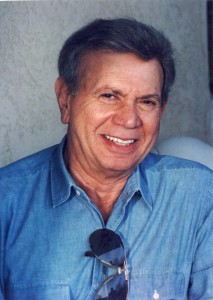
Q2:
Your dad was the amazing photographer Marty Mills. I’ve seen a number of great photos he took on your Facebook page. Can you tell us a little about your dad? Some of our readers may not realize that you were born some years after Ernie died when your mom had remarried.
A: Ernie died in 1962 and I was born in 1968. Evidently, my mom had known my dad for years prior to Ernie’s passing because he was an agent at MCA who was best friends with her (and Ernie’s) agent, Marty Kummer. They knew each other socially and started dating in the early-sixties and married in 1964. My parents got along so well because they had a lot in common. They were both in show business and my mother knew all about classical and popular music which my dad did as well. My grandfather was Jack Mills who founded Mills Music which published some of the biggest hits of the first half of the century. My dad worked as a song plugger at Mills, trying to get DJs across the country to play the songs they published and was quite successful. Mills Music was the largest independent publisher in the world from about 1920 – 1960 when it was sold. They published Duke Ellington, Fats Waller, Hoagy Carmichael and tons of other great songwriters out of the Brill Building. In some ways my grandfather was Tin Pan Alley.

Anyway, my dad ran with a pretty hip crowd in his youth – he was great friends w/ Mel Torme, Buddy Rich, Patti Page, Sammy Davis Jr. It was the fifties in New York and my dad would tell me they would go see double and triple bills of movies in Times Square and would have squirt gun fights in the balcony and cause all sorts of mayhem. He once told me an insane story about having to hide out from the Chicago mob after a bender w/ Shecky Greene due to a bar fight that turned out to be mistaken identity. My dad became a photographer in about 1965 when my mom went to Rome to shoot, “The Honey Pot” (aka “Anyone for Venice”) w/ Rex Harrison and Cliff Robertson. They were on location shooting at Cinecitta studios when an outbreak of something terrible hit the set like Typhoid or meningitis which brought the shooting to a halt and suddenly they were in Rome with nothing to do. What’s more, they couldn’t leave because they might shoot anytime. So my parents moved out of the hotel the studio had them in and moved to an apartment on the Spanish Steps for 6 months. I ask you, who wouldn’t kill to be stuck in Rome in the mid-sixties for half a year. My dad learned how to cook Italian food and picked up the camera for the first time. He came home with a new skill and began to shoot for Look Magazine, Sports Illustrated, TV Guide and others.
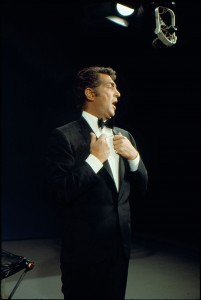
He was entirely self-taught but he had a great eye. And because he knew many celebrities socially, he was able to get some great shots. Dean Martin called him while shooting the film “Bandalero’ in Mexico and asked him to come down and hang out because he was bored on the set. So my dad brought his camera and took some amazing shots of Dean – on the set, golfing, making pasta. They are mind bogging. He ended up shooting 3 album covers for Dean as well. My dad lived a pretty cool life too if I may say so myself.
Q3:
When your mom passed away, the preservation baton was passed to you. Since I knew your mom, I knew she was working on a Kovacs DVD set for some time that never materialized, and you made it happen. Now, there’s a volume 2. You’ve released recordings and lot of other stuff. You seem to take preservation very seriously. What does all this mean to you? Most of this stuff was made before you were born, and Kovacs was a guy you never met.
A: My mom was fantastic in not only her preservation efforts but her instincts. However, my mom also missed some opportunities because she would say, “Kovacs always skips a generation,” meaning that he might not be hip in 1960’s but the 1970’s comedians rediscovered him. Same thing in the ‘80’s – not a lot of action until the 1990’s when another round of comedians popped up talking about Kovacs. Still, I could see that as we got to a digital age and black and white was a tough sell to anyone under 30, she was holding on too tight.
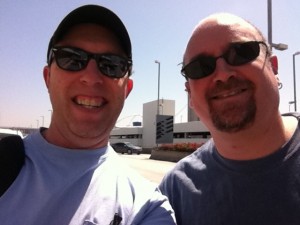
When she passed away in 2008, I really wanted to make sure Kovacs was reinserted in the conversation. At about that time, the Conan/Leno The Tonight Show passing of the baton/debacle was going on and no one (!) even mentioned Kovacs as a regular guest host of The Tonight Show. It killed me. And shortly thereafter, PBS did a special on the history of comedy and Kovacs wasn’t in that either. Thankfully, at about that time, Jordan Fields at Shout! Factory approached us about working together on what eventually became “The Ernie Kovacs Collection” (Volume 1) and that was our vehicle to get Kovacs back into the conversation. Without Shout! Factory and Ben Model, who has been an invaluable archivist and curator of the Kovacs material these past 5 years, I don’t know where we’d be.
Q4:
I visited your mom in 1999, and she showed me a some material I’d never seen before. It was from her own show Here’s Edie, which was made immediately after Kovacs died. These shows are amazing, very different from Kovacs, much more arty and serious, but great material. Her guest stars included just about anyone who was famous and in the music business at the time. Even if those shows were boring, they would be an amazing historical record. But they’re not boring at all. They’re really wonderful. I chided her at the time that she was better at promoting Kovacs than she was at promoting her own work! Tell us a bit more about those shows and how you feel about them. Is there any chance that they will be released again?
A: I’m really happy you asked me about this. My mom was amazingly talented but because she was saddled with debt after Ernie’s passing, she literally just had to bring in the bucks to pay off the I.R.S., ABC Networks and Kovacs’ gambling debts. There was a guy at Consolidated Cigar (now Altadis) who ran Dutch Masters and got along famously with Ernie named Jack Mogulescu. Jack was responsible for getting Consolidated to get behind Ernie’s shows – and they paid off not so much in ratings but in sales. When Ernie passed, he came to my mom and asked her if she wanted to be the spokeswoman for Muriel Cigars. Muriel was a poor-selling brand and they thought my mom might be able to help sales. Everyone remembers her as ‘the Muriel girl’ because her commercials were so iconic but they also sponsored her shows, Here’s Edie and The Edie Adams Show which ran every other week opposite Sid Caesar’s show.
Like Kovacs shows, Consolidated didn’t care if my mom’s shows got ratings, as long as sales increased and she did promotion and publicity for the brand. So not only did the sales go through the roof (and got my mom a contract that paid her until 1992) but they let her produce her own show. That’s unheard of! Being a Julliard student, my mom approached her show like her stage act at the time. She wanted to bring ‘high art’ to the masses. That’s why you see Duke Ellington, Stan Getz, Count Basie alongside Sammy Davis Jr., Bobby Darin. That and she tried to tape on Sundays when crew and performers got double time and golden time so they were more than happy to be well-paid to come on her show. This she learned from Kovacs.
Look for a nice Edie Adams Show DVD package to come out in 2013 with more bells and whistles than my mom got walking past a construction site in midtown!
Q5:
I know you’re involved in the music business yourself. You work with a lot of bands and have your own publicity firm. Tell us about that, and explain a bit on how you got into it.
A: I do but I’m not that interesting. I manage a Cambodian/American band Dengue Fever (www.denguefevermusic.com) who are fantastic and unique and do PR for many bands and projects. I was hoping to be a screenwriter and went to college to get into film but when I got out and sat down to write something – I realized I had nothing to say at 22 years old. So I realized that I loved music and thought would look into that. Here I am 18 years later. Truth be told tho, I can see the Kovacs and Edie material becoming a full-time job down the line a bit.
Q6:
You’re doing a series of roadshows promoting the material you have in the Kovacs/Adams collection. Tell us about those shows and where they have been. Do you have any more coming up?
A: We are working on upcoming events in Los Angeles, New York (and perhaps) Indianapolis in 2013 but in the last two years, we have done events at the Paley Center and Museum of the Moving Image in New York, American Cinematheque in Los Angeles and AFI and the National Gallery of Art in Washington DC. Essentially, the goal is to bring Kovacs and his admirers together for a live event. And the venues we have found most receptive have been amazing places to help get the word out. It’s been gratifying to help promote the Kovacs and Adams brands with panels including entertainers: Keith Olbermann, George & Jolene Brand Schlatter, Robert Klein, Hal Prince, Alan Zweibel, Harry Shearer Jeff Greenfield, Bob Odenkirk, Joel Hodgson and Merrill Markoe talk about their love of Ernie. I always loved comedy as a kid and to be in the same room with Robert Klein or Jeff Garlin, I become like a shy little kid. I can’t believe I helped bring them to these events. And I actually do become a little kid – I had Harry Shearer sign my Credibility Gap CD and Robert Klein sign his “Child of the Fifties” LP. I’m as much a fan as anyone.
Q7:
Are there any “holy grails” out there for you? By this I mean projects that Kovacs, or your mom or dad did that you know were produced, but that you can’t find?
A: Well we are always on the lookout for more material. Ben Model, our curator, always talks about hoping someone will find Kovacs Unlimited (CBS 1952-54) in an attic or someplace. It’s happened before. People approached my mom all the time to buy back her own shows! That infuriated her. In fact, she is on record at the Library of Congress talking about this very subject. She always talked about some guy who found something that ‘….fell out of the back of a truck’ when it came to Kovacs.
Finding the long lost Kovacs comedy record, “Percy Dovetonsils…Thpeaks” was cool and we have a fantastic partner in Omnivore Recordings who released that this year on CD & lavender vinyl. We are also plowing through some audio airchecks my mom had made of “Kovacs Unlimited”. So although no video exists, it’s a daily record of television in the 1950’s. We culled my mom’s CD “Edie Adams Christmas Album” from material she sang on the show.
So to paraphrase Kovacs in his Mr. Question Man, “It’s a common misconception. People are falling off all the time.” We’re coming up with new stuff all the time too.
Q8:
Your mom was an intense “force of nature” personality. I’ve told people that I’ve never known anyone who could talk so fast and so long without stopping. (I really did have to buy a new answering machine because she would call and fill up the one I had.) She was driven and focused on what she wanted to do. I also know that she was very proud of you, because she always spoke highly of what you were doing. I don’t want to get too personal, but can you tell us a little what it was like growing up in a whirlwind like that? Every once in a while I find articles about her buying and almond farm and such and I just think, wow… that must have been a roller coaster.
A: She was a force of nature. She made (and lost) lots of money but I think she had a pretty good time. She dated Eddie Fisher, Peter Sellers, comedy writers after Ernie passed – why not? She taped her shows in Las Vegas, New York and London. She knew everyone – I have a photo of myself, my best friend Josh Davis and his brother Tony dressed as the Marx Brothers WITH GROUCHO on Halloween. It blows my mind she could just call him up and we came over.
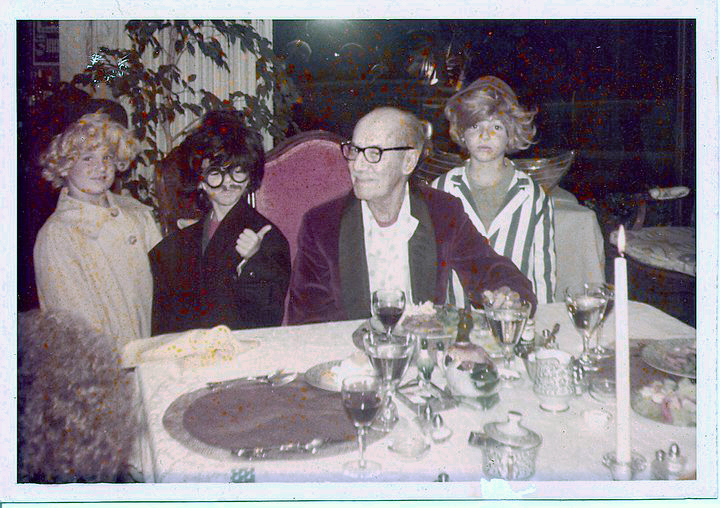
But you know what? My mom was also a truly sweet, kind woman too who had her feet firmly planted on the ground. She was a great mom. She was away a lot doing musical shows when I was a kid and she felt a lot of guilt over that but it paid the bills. She had to do it. But she always worked the snack stand at my little league baseball games, came to all my school functions, made sure I was with her for at least a week when she was on the road working and worked her butt off to keep climbing back into the ring again and again. She lost Ernie to a car accident in ‘62, her daughter in a car accident in ‘82, lost a great friend to AIDS and yet she still could laugh. I mention this in my liner notes to her Christmas CD but she was a pretty terrible cook. And yet after college, she always had a huge Thanksgiving party at her house for all my friends and those friends still talk about how great those times were. That’s immensely satisfying. Above all, she was a funny, fantastic woman who happened to introduce me to Gore Vidal, spent Christmas nights at Jack Lemmon’s house every year but still was my biggest supporter (with my dad). They always told me they loved me and always told me how proud they were of me. What more couldn’t you want, really? I couldn’t have asked for better parents at the end of the day.
Q9:
You’re a well-known food connoisseur, and you’ve lived in a number of places. I love that stuff myself. Can you give us a short list of eateries that are “don’t miss” places?
A: I was just in Washington D.C. and Ben’s Chili Bowl ( http://www.benschilibowl.com/ordereze/default.aspx) and the Florida Avenue Grill ( http://floridaavenuegrill.com/) are just fantastic, real places that should be on your short list. Arthur Bryant’s (http://www.arthurbryantsbbq.com/index.htm ) in Kansas City serves perhaps what can only be described as a psychedelic meat experience and the best BBQ I have ever had.
My mom loved Frankie and Johnnies in New York from her theater days (http://frankieandjohnnies.com/steakhouses/frankieandjohnnies.html) and Patsy’s ( http://www.patsys.com/ ) is also a favorite. My dad and my grandfather were major foodies – both highbrow and low brow. Every year we’d visit my dad’s family on Long Island, it was a ritual – we had to get White Castle and Sabrett hot dogs. It wasn’t even a question – you just made it a point to go. I still do. My 2 and a half year old took down 2 Sabrett’s a year ago and I couldn’t have been more proud!
Q10:
I have done enough interviews that I get frustrated about people asking me the same old questions and missing important things. What question should I have asked you that I didn’t? How would you answer it?
A: If you could be any sandwich in the world, what would you be? A knuckle sandwich of course.
I’d like to thank Josh Mills and Ediad Productions for all the photos used in this post.

